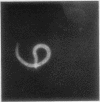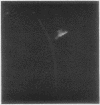Abstract
The indirect fluorescent antibody test has been used to detect Toxocara antibodies quantitatively in human sera. The results obtained correlate well with those obtained with the toxocara skin test. Cross reactions have been found with Ascaris lumbricoides and about one in five normal sera give a significant fluorescent reaction. The specificity of the test has been established by Ascaris adsorption studies and by a lack of cross reaction with sera from other helminthic infections. The test may be especially easy to use and therefore particularly valuable in regions where A. lumbricoides infection is relatively rare.
Full text
PDF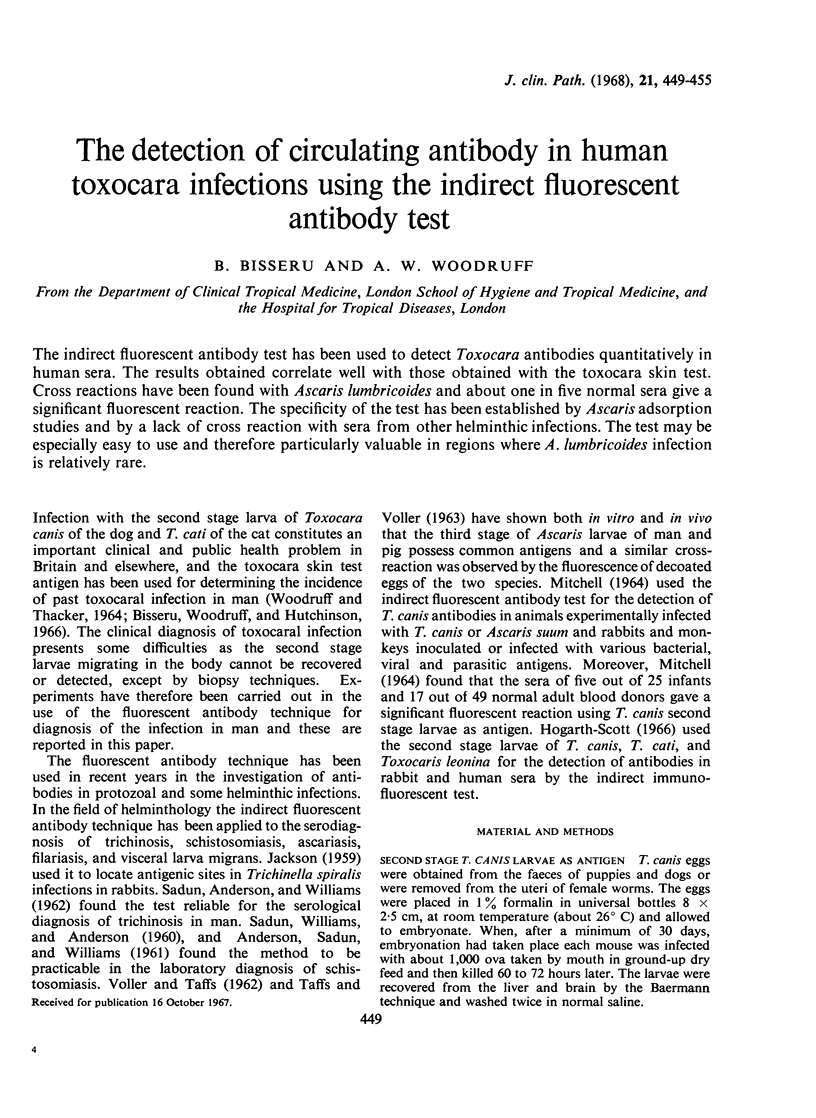
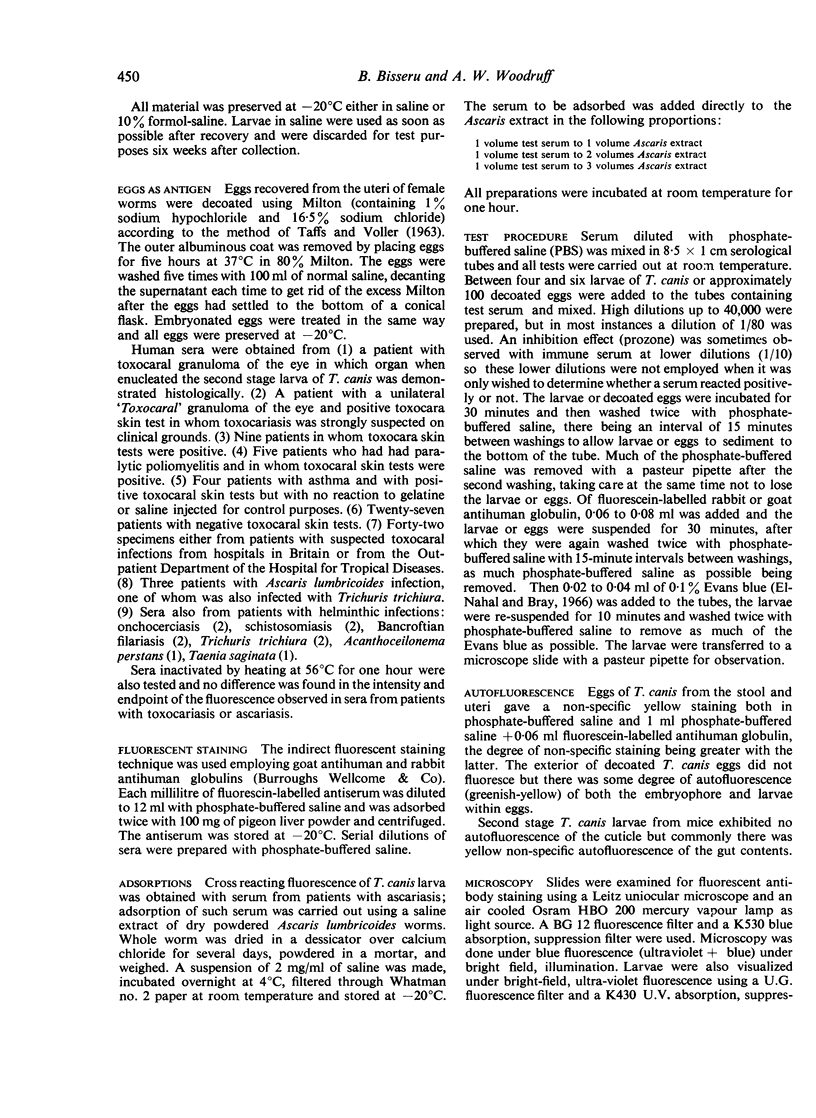
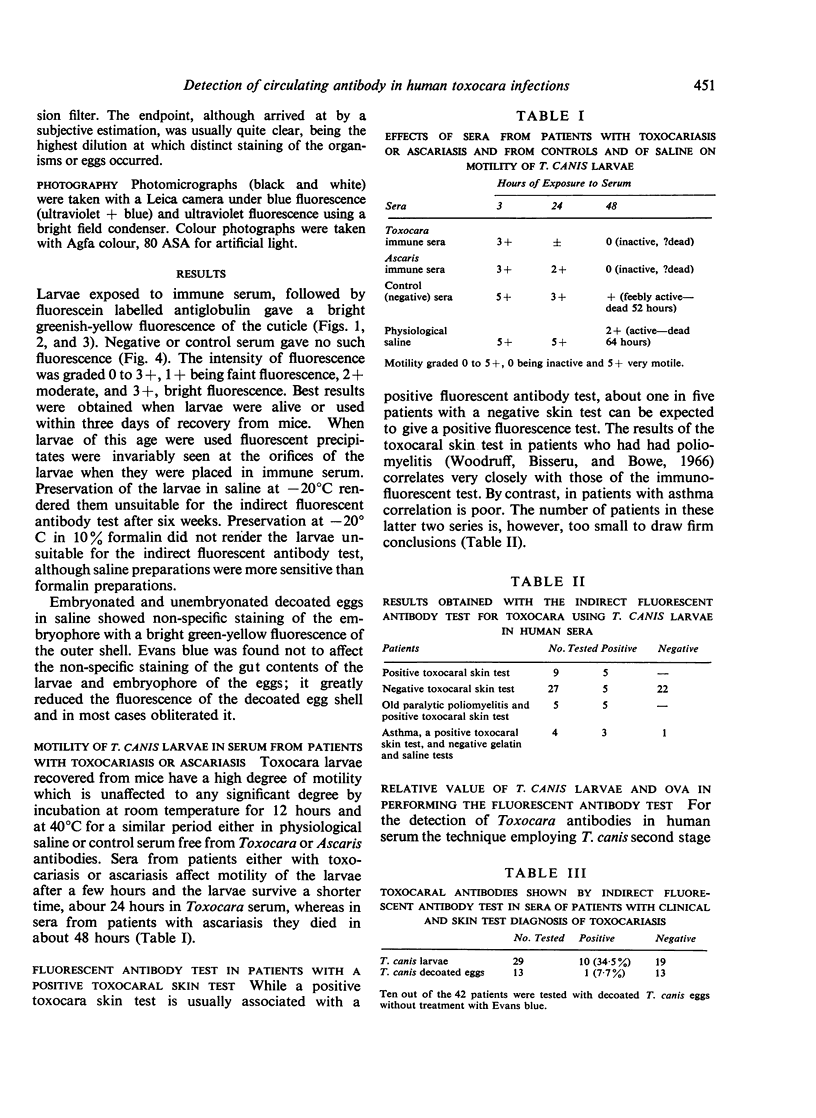
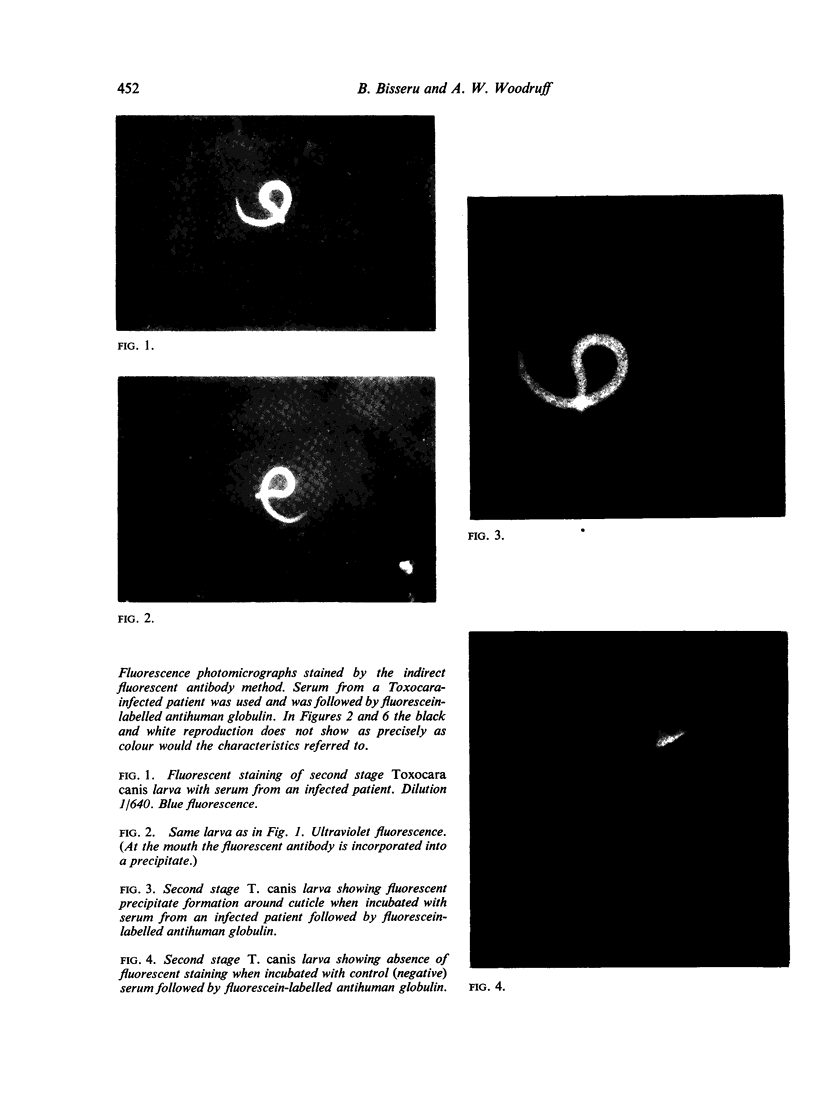
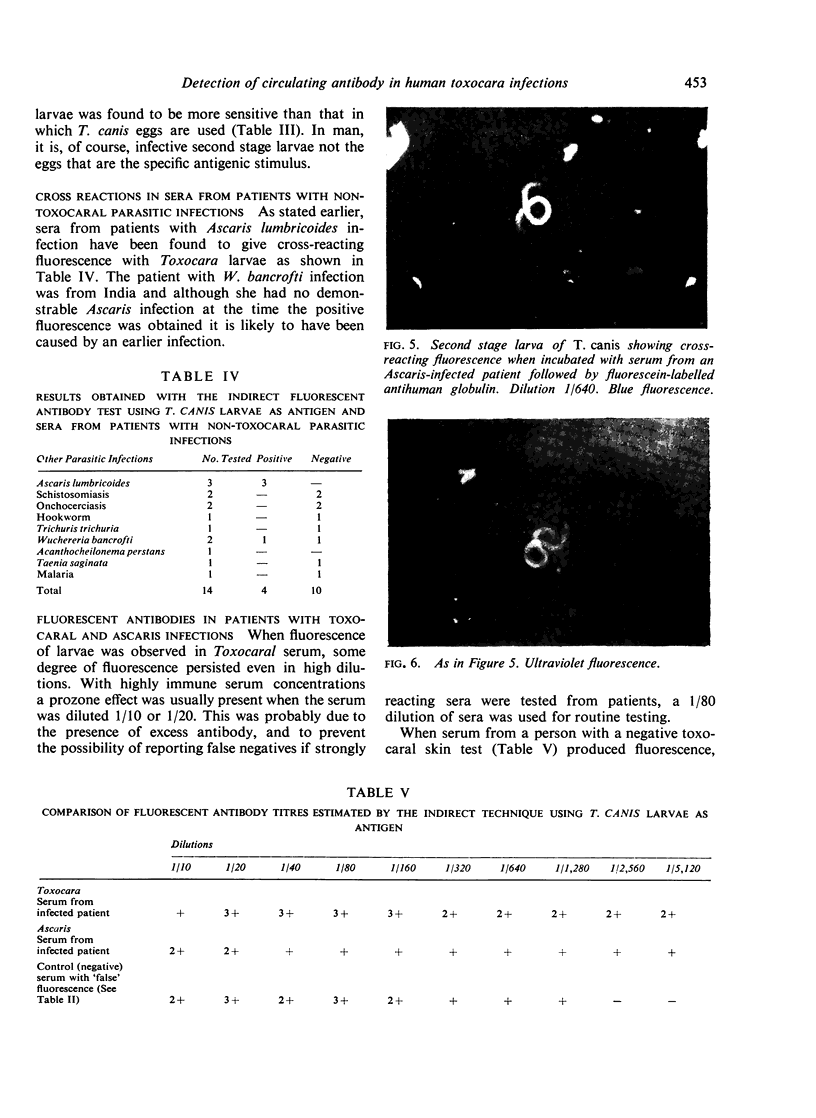
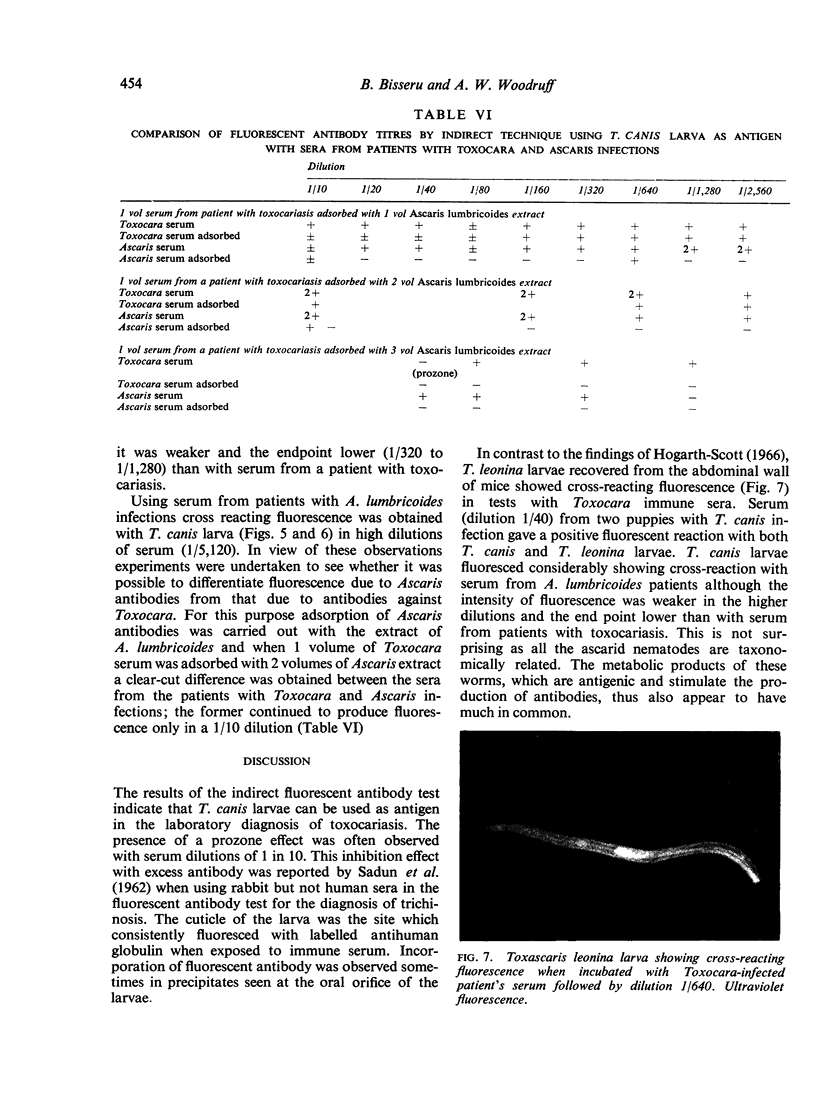
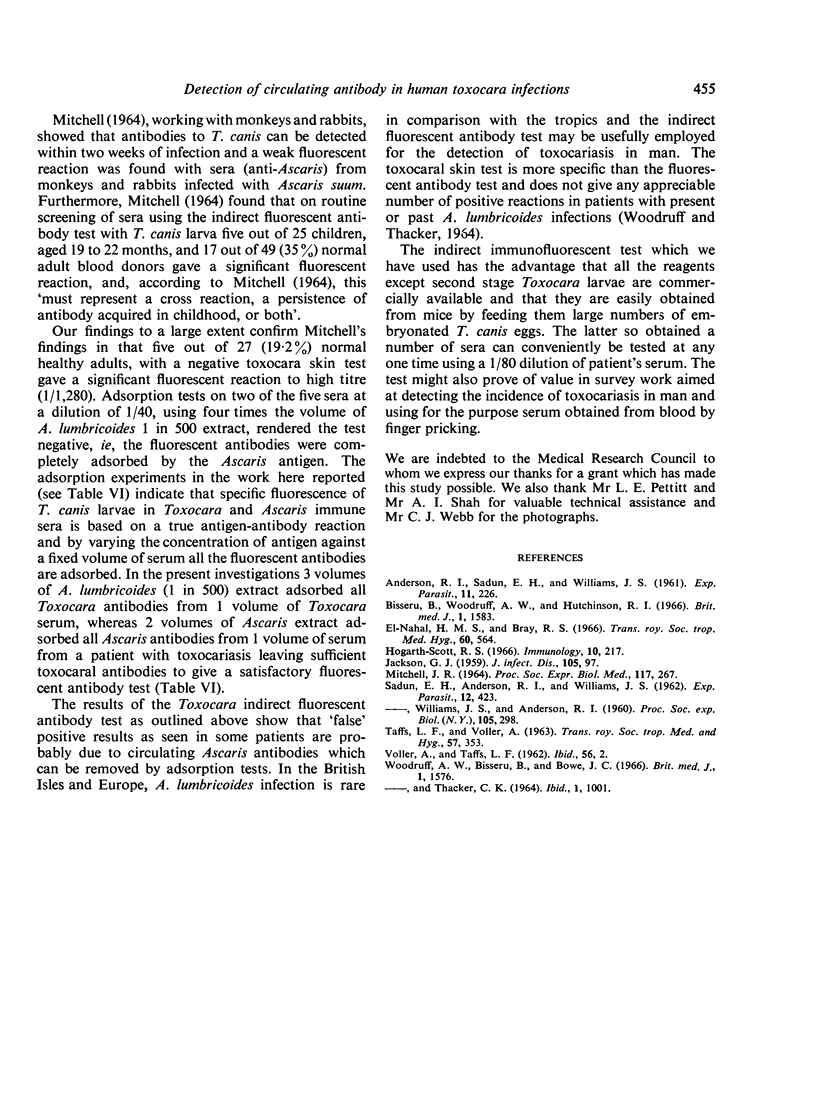
Images in this article
Selected References
These references are in PubMed. This may not be the complete list of references from this article.
- ANDERSON R. I., SADUN E. H., WILLIAMS J. S. Preserved cercariae in the fluorescent antibody (FA) test for schistosomiasis. Exp Parasitol. 1961 Sep;11:226–230. doi: 10.1016/0014-4894(61)90028-5. [DOI] [PubMed] [Google Scholar]
- Bisseru B., Woodruff A. W., Hutchinson R. I. Infection with adult Toxocara canis. Br Med J. 1966 Jun 25;1(5503):1583–1584. doi: 10.1136/bmj.1.5503.1583. [DOI] [PMC free article] [PubMed] [Google Scholar]
- Hogarth-Scott R. S. Visceral larva migrans--an immunofluorescent examination of rabbit and human sera for antibodies to the ES antigens of the second stage larvae of Toxocara canis, Toxocara cati and Toxascaris leonina (Nematoda). Immunology. 1966 Mar;10(3):217–223. [PMC free article] [PubMed] [Google Scholar]
- JACKSON G. J. Fluorescent antibody studies of Trichinella spiralis infections. J Infect Dis. 1959 Sep-Oct;105:97–117. doi: 10.1093/infdis/105.2.97. [DOI] [PubMed] [Google Scholar]
- MITCHELL J. R. DETECTION OF TOXACARA CANIS ANTIBODIES WITH FLUORESCENT ANTIBODY TECHNIQUE. Proc Soc Exp Biol Med. 1964 Oct;117:267–270. doi: 10.3181/00379727-117-29554. [DOI] [PubMed] [Google Scholar]
- SADUN E. H., ANDERSON R. I., WILLIAMS J. S. Fluorescent antibody test for the serological diagnosis of trichinosis. Exp Parasitol. 1962 Dec;12:423–433. doi: 10.1016/0014-4894(62)90078-4. [DOI] [PubMed] [Google Scholar]
- TAFFS L. F., VOLLER A. IN VITRO FLUORESCENT ANTIBODY STUDIES ON ASCARIS LUMBRICOIDES AND ASCARIS SUUM. Trans R Soc Trop Med Hyg. 1963 Sep;57:353–358. doi: 10.1016/0035-9203(63)90098-1. [DOI] [PubMed] [Google Scholar]
- Woodruff A. W., Bisseru B., Bowe J. C. Infection with animal helminths as a factor in causing poliomyelitis and epilepsy. Br Med J. 1966 Jun 25;1(5503):1576–1579. doi: 10.1136/bmj.1.5503.1576. [DOI] [PMC free article] [PubMed] [Google Scholar]




